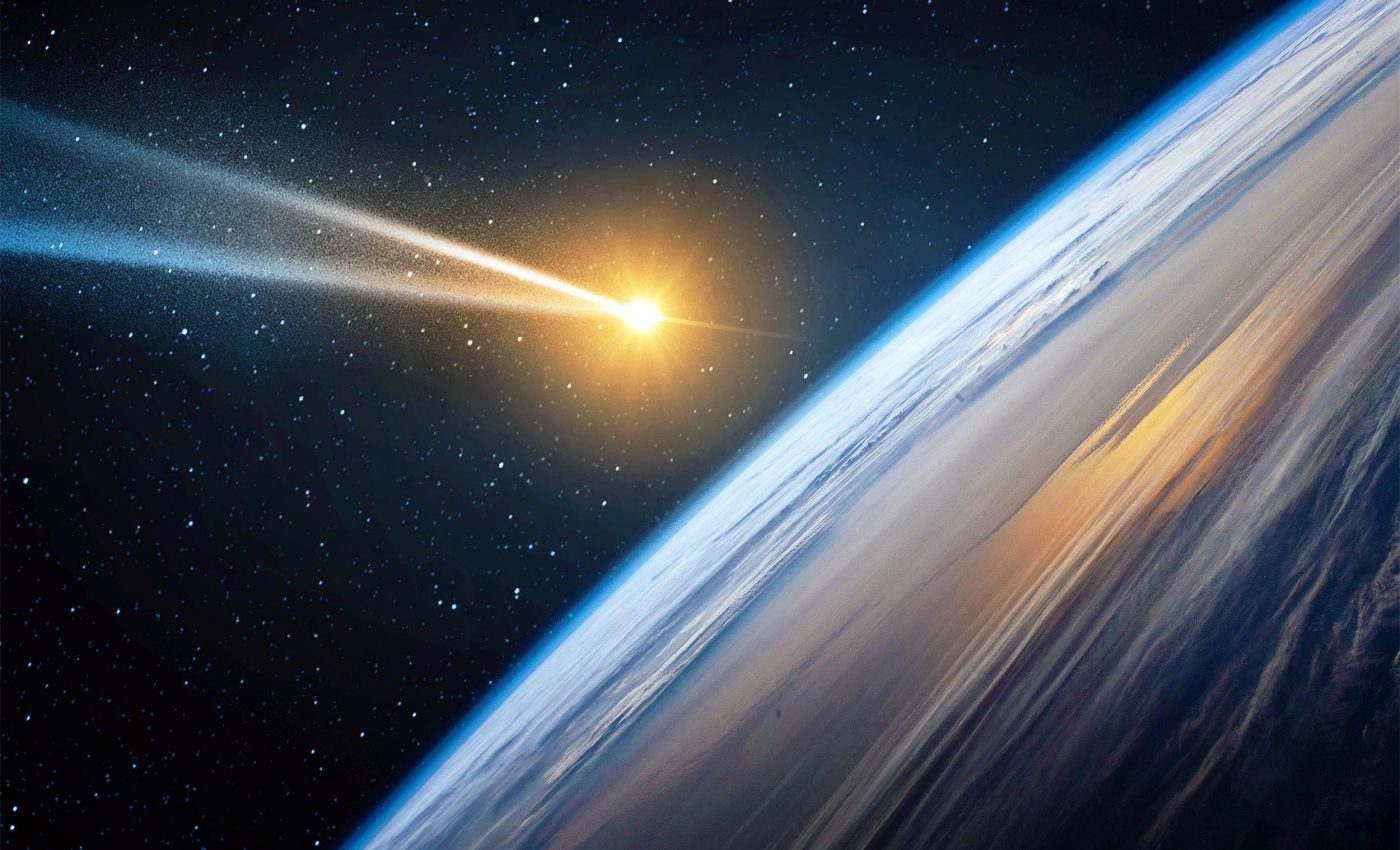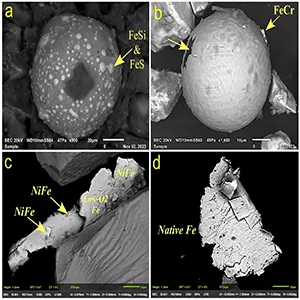
Metallic beads in Arctic mud suggest a comet slammed into Earth not long ago
Tiny metallic beads hiding in deep Arctic mud have reignited a long-running argument about why Earth shivered 12,800 years ago. The new evidence comes from four sediment cores lifted out of Baffin Bay, between Greenland and Canada, that capture a razor-thin layer rich in comet-like debris.
The abrupt climate lurch, known as the Younger Dryas, drove Northern Hemisphere temperatures down roughly 18°F in what ice cores suggest was a matter of months.
Dr. Christopher Moore of the University of South Carolina (SC) says his team’s ocean-core data link that chill to incoming space dust rather than to a pulse of glacial meltwater.
Comet or meltwater cause of ice age
Most textbooks trace the cold spell to floods from the collapsing Laurentide Ice Sheet that diluted Atlantic surface water and slowed heat-bearing currents.
The rival impact idea argues that Earth blundered into a comet stream, causing airbursts, fires, and a short impact winter that tipped the climate until ocean circulation recovered.
That second scenario burst onto the scene in 2007 when scientists reported soot, glassy spheres, and a sharp platinum spike at dozens of continental sites.
Skeptics soon countered that those clues could be contamination or the by-products of ordinary surface processes, and many paleoclimatologists stayed loyal to the meltwater narrative.
Deep cores show comet debris in Ice Age
Moore’s group hunted for evidence beyond the reach of plows, factories, and foot traffic.
They sampled cores resting up to 1.5 miles beneath the waves and more than 20 feet below the modern seabed, then dated each layer with foraminifera radiocarbon counts.
At the Younger Dryas boundary the cores show dense clusters of iron-rich glassy balls called microspherules and nickel-bearing splinters known as metallic dust particles, both typical of flash-melt events.
They also register peaks in platinum group elements, notably platinum and iridium, whose cosmic abundance dwarfs crustal levels.
“Our identification of a Younger Dryas impact layer in deep marine sediments underscores the potential of oceanic records to broaden our understanding of this event and its climatological impacts,” said Dr. Moore.
Mix of earth and comet dust in Ice Age
The team compared element ratios in the spheres with stardust scooped from Comet Wild 2 and with cosmic dust caught in the upper atmosphere.
Most spheres carried a terrestrial silicon-iron signature seasoned with about one percent extraterrestrial nickel and chromium, the blend expected when searing shock fronts melt local rock while sprinkling comet grains.
Every year Earth sweeps up roughly 5,000 tons of space dust, hardly enough to leave a global platinum spike, let alone trigger a centuries-long chill.
By contrast, the Baffin Bay layer implies a six-month influx of millions of tons, three orders of magnitude above the background drizzle.
Comet theory vs meltwater theory
Freshwater models can still reproduce the cold if enough melt pours into the North Atlantic at once. A separate study even showed that floods routed through the Hudson Valley could jolt Atlantic circulation without outside help.
Critiques of the impact work also persist, noting mismatched dates at some sites and the absence of an obvious crater.

Moore replies that low-altitude airbursts leave little more than tiny glassy fallout, and that glacial erosion would quickly erase shallow craters on an ice sheet.
Comet strike effects on life
Beyond the immediate cooling, an extraterrestrial strike of this scale could have set off a chain of environmental disruptions.
Soot from widespread wildfires, combined with fine cometary dust, may have dimmed sunlight long enough to stress plant life and ripple through food webs.
Layers from the Younger Dryas period in several regions hold signs of intense biomass burning, adding weight to the idea of global ecological shock.
Large-scale die-offs of megafauna and abrupt changes in human settlement patterns appear in archaeological records from this period.
While correlation does not prove causation, the overlap in timing between these biological shifts and the impact proxies in the sediment has kept the hypothesis alive in both paleontology and anthropology circles.
Ice Age comet event climate lessons
Understanding how fast the climate can flip is not just academic. If a brief dust veil could stall Atlantic circulation once, large volcanic plumes or human-caused soot might hold similar leverage.
The work also widens the hunt for ancient impacts to offshore archives, where mud builds quietly and contamination risks drop.
Future cores from the North Atlantic, Arctic Ocean, and even the Gulf of Mexico could trace the fallout plume and settle how widely the particles spread.
For now the Baffin Bay cores add a fresh puzzle piece rather than the final picture. Whether that piece fits better with a cosmic hailstorm or with rampaging meltwater remains an open, and lively, question.
The study is published in PLOS One.
—–
Like what you read? Subscribe to our newsletter for engaging articles, exclusive content, and the latest updates.
Check us out on EarthSnap, a free app brought to you by Eric Ralls and Earth.com.
—–













